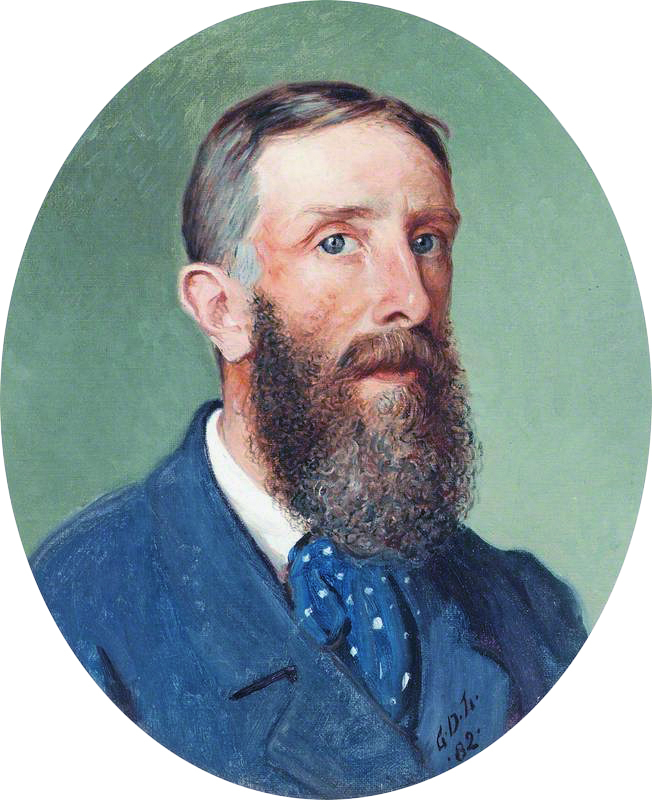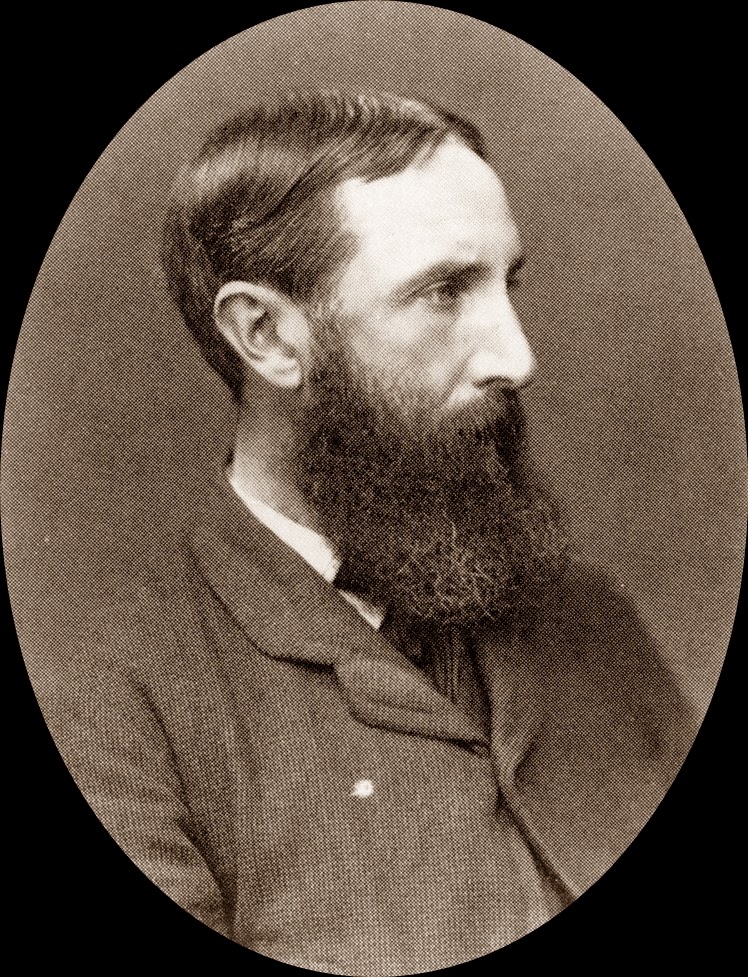
Aberdeen Art Gallery & Museums
George Dunlop Leslie RA was a follower of the Pre-Raphaelites and an aesthetic painter and Royal Academician, a private in the Victoria Rifles and a member of the Lodge.
Leslie was born on 2 July 1835, the youngest of the six children born to the distinguished Anglo-American painter and Academician Charles Robert Leslie RA and Harriet Honor Stone. Their second son was Sir Bradford Leslie was a noted bridge builder.
It was an artistic family. Robert Leslie, George’s paternal uncle, was a marine artist, and his maternal aunt was American author Eliza Leslie. George’s sister was the artist Mary Leslie.
Leslie studied at Cary’s Art Academy before going to the Royal Academy in 1854. His first exhibition at the RA was in 1859 and he showed his work every year from thereon. He was elected an Associate in 1868 and a full Royal Academician in 1876.
Leslie lived initially in St John’s Wood and was part of the St John’s Wood Clique, a group of artists who favoured light-hearted genre subjects.
In 1884 he was moved to Wallingford, Oxfordshire to a house called Riverside in St Leonard’s Lane which was next door to his artist sister Mary. The artist James Hayllar also lived in the village. He painted four angel murals in the local church, St Leonard’s. He stated that his aim in art was “always… to paint pictures from the sunny side of English domestic life”.
In 1901 he moved to Compton House in Lindfield, Sussex, where he would remain for the rest of his life.
His early works, such as Matilda (1860) showed the strong influence of the Pre-Raphaelites, but he settled into a more academic, aesthetic, style of painting with the aim of showing “pictures from the sunny side of English domestic life”. He often used children as subjects and his work was praised by John Ruskin for its portrayal of the “sweet quality of English girlhood”. One of his pictures, This is the Way we Wash our Clothes was used as a poster in an advertising campaign for soap. Despite its apparently trivial subject matter, however, Leslie’s work was highly regarded by critics of the time.
Leslie was also an author and had several books published. Our river (1888), Letters to Marco (1893) and Riverside letters (1896) all included illustrations by the author and were based on personal observations of life and nature in his local area.
He also wrote a history of the early years of the Royal Academy titled “The inner life of the Royal Academy” in which he noted the support of the rifle volunteer movement by the artistic community in general and by Lord Alfred Leighton and the Artists Rifles and his twelve years as a Private in the Regiment in particular:
“Leighton once asked me to join the Artists’ Volunteers. He was forming two new companies of that celebrated corps, and offered me the command of one. I had already been for twelve years a full private in the Victoria Rifles, and as I knew very well how much would be expected of me if I were to serve as an officer under his command I felt bound to decline. I frankly declared my unsuitableness for the preferment on the ground of my unpunctuality. I told him that I never even carried a watch. I wore, it is true, a watch chain, which I showed him, but at one end of it was a latch key and at the other a cork- screw. I shall never forget his expression of pain and surprise at this confession of weakness on my part, and I need scarcely say that he desisted at once from any further persuasion.”
In addition to Leslie’s membership of the Regiment, two other members of the St John’s Wood Clique of artists, David Wilkie Wynfield and Valentine Cameron Prinsep were members 38th Middlesex (Artists’) Rifle Volunteer Corps, the Artists’ Volunteers.
Leslie was married to Lydia. They had a daughter Alice (who he painted in his Alice in Wonderland now in the Brighton & Hove Museums and Art Galleries) and a son Peter Leslie (1877–1953) who was also an artist.
His works are on display at the RA and the Tate, as well as the Guildhall, Brighton & Hove, the Walker, the Lady Lever, Salford, Aberdeen and several others.
He died on 21 February 1921.
